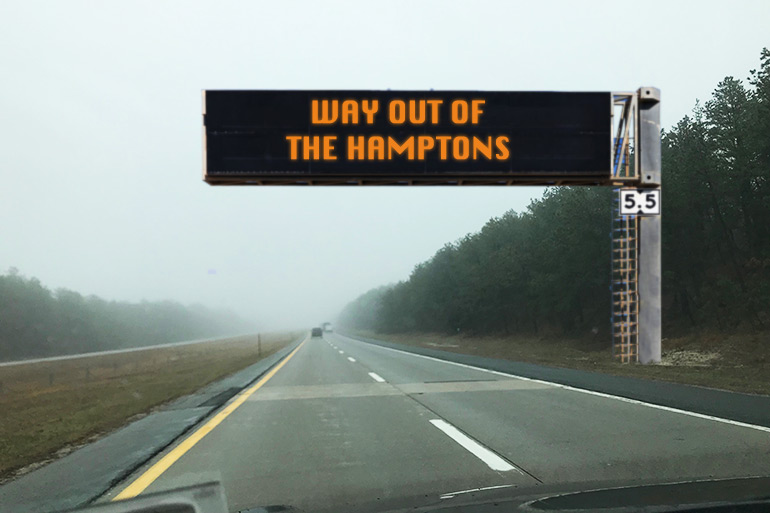Hamptons Police Help Lost Vacationers Return to NYC

The Hamptons Police Department this week announced dramatic steps it plans to take in order to aid lost vacationers in the Hamptons. The need for serious action, according to Hamptons Police spokesman Larry Hirsch, has started to loom as the plight of lost vacationers has become ever more desperate in recent days.
“For a while, we thought maybe they were just people who had decided to stay past Labor Day to enjoy the beginning of the harvest season,” Hirsch says. “That was trouble enough. But as the weeks have gone by, and these vacationers have continued to inundate the villages and strain local services, we realized that the situation was far more dire. These people are clearly lost.”
Hirsch cites as evidence of this conclusion the “dazed, glassy-eyed” appearance of many people walking in village shopping districts. “They stop in the middle of the sidewalk, slowly looking up and down the rows of shops,” he says. “They ask for directions on how to get to the most obvious places. These are classic symptoms of people who don’t know where they are.”
He recounts as corroboration a recent incident that took place on Main Street in Sag Harbor in which a husband and wife from Weehawken, New Jersey engaged a Sag Harbor resident in conversation. “It started innocently enough,” Hirsch says. “They chatted about the cinema rebuilding project and other topics of local interest. But then the husband got a very serious look on his face and begged the local resident to point the way out of the Hamptons.
The local man pointed south down Main Street, and the couple thanked him and they parted company. But later, the local man saw the same couple in a car slowly doing laps around Main Street, arguing with each other.” The resident reported what he witnessed to police.
Hirsch says that in order to aid these lost vacationers in finding their way home, the Hamptons Police have decided to place large signs in prominent locations in every village with the message “Way Out of the Hamptons” displayed in capital letters and with arrows pointing to the most direct route out of the area.
“We feel that this is the most compassionate way to deal with the situation,” Hirsch says. “We know that often people are embarrassed to ask for directions, especially when they want people to think of them as locals.”
Hirsch notes that the signs will be electronic, and thus will be able to alternate their message among multiple languages. “They’ll also be very visible at night, so that there won’t be any time of day when visitors won’t be able to find their way out.”



